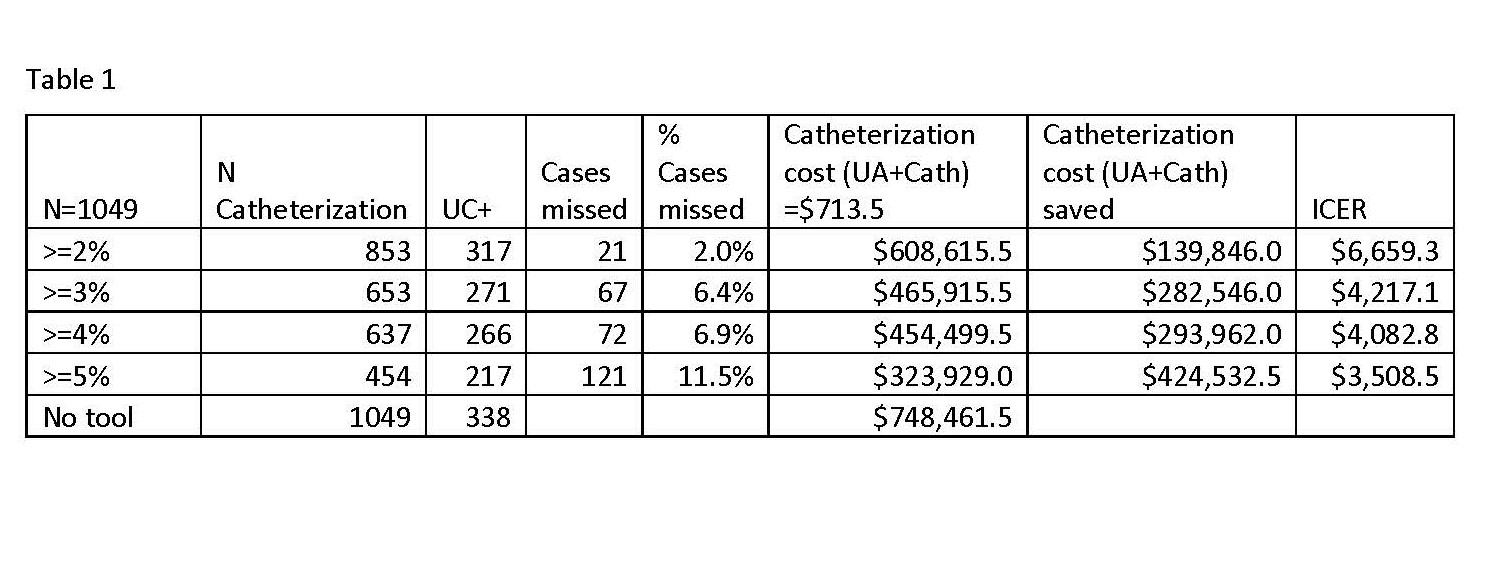Emergency Medicine 7
Session: Emergency Medicine 7
095 - Cost Savings with the Application of UTICalc in children with suspected urinary tract infections
Sunday, April 27, 2025
8:30am - 10:45am HST
Publication Number: 95.4292
Donna M. Moro-Sutherland, University of Nebraska College of Medicine, Chapel Hill, NC, United States; Hongmei Wang, University of Nebraska Medical Center Department of Health Services Research and Administration, Omaha, NE, United States; Junghyae Lee, UNMC, Omaha, NE, United States; Zebulon Timmons, Children's Nebraska, Elkhorn, NE, United States; Hannah Sneller, Children's Nebraska, Omaha, NE, United States

Hannah Sneller, MD (she/her/hers)
Pediatric Emergency Physician/Associate Professor of Pediatrics
Children's Nebraska
Omaha, Nebraska, United States
Presenting Author(s)
Background: The AAP recommends that a catheterization (cath) or suprapubic aspiration is recommended for diagnosis and before starting antibiotic treatment for evaluating for UTI in nontoilet trained children. Clinicians obtain urine samples when they judge the probability (prob) of a UTI to be sufficiently high. In 2018, Shaikh N et al developed a predictive tool, UTICalc, a calculator that estimates the prob of UTI based on clinical variables and then, if lab testing is performed, update the prob estimate based on results. If one was to determine that a cath urinalysis was not indicated, one could determine the cost savings when such a tool was used in our everyday practice.
Objective: To determine the cost savings at different risk thresholds with UTICalc.
Design/Methods: In a retrospective cohort study, we applied the UTICalc at four pretest probabilities (pretest prob) in children 2 months to 2 years of age. The four pretest prob were >2%, >3%, >4% and >5% to determine if a cathUA would be collected. The posttest probability (posttest prob) of >5% as the cut-off point to determine if empiric antibiotics should be started. We determined the cost savings using the different pretest prob and posttest prob, not including antibiotic costs.
Results: 1049 patients were included with a pretest prob >2% screening for the least missed UTIs and pretest prob >5% missing the most UTIs with the application of UTICalc in our patient population. The cost of the UA physician charge, UA facility charge, UAcath physician charge, and UAcath facility charge for nursing catheterization (cath) costs were $22.00, $268.50, $67.00 and $356.00, respectively. Applying a unit cost of $713.5 for cath at the four-pretest cutoff points, the cost saving was experiential as expected with a total cath cost savings of $139, 846 using cutoff point at 2%; $282, 546 at 3%; $293,962 at 4% and $424,532.50 at 5%. The incremental cost effectiveness ratio (ICER) shows the additional cost (not including antibiotic costs) related to each one additional case identified through having the cath for all patients as compared to using the different cutoff points based on the tool. The ICER was $6,659.30 at 2%, $4,217.10 at 3%, $4,082.80 at 4% and $3, 508.50 at 5%. Each additional UTI identified through the current practice of urine cath for all patients is associated with $6,659.30 higher medical costs, when compared to using the cutoff point of pretest prob of 2%.
Conclusion(s): Application of the UTICalc as an adjunct to determine if a child 2 months to 2 years of age would be screened for a UTI would add to healthcare savings in this patient population.
Table 1
 Cases missed, cost savings, and ICER for different cutoff points , using unit catheterization cost of $713.50.
Cases missed, cost savings, and ICER for different cutoff points , using unit catheterization cost of $713.50.
